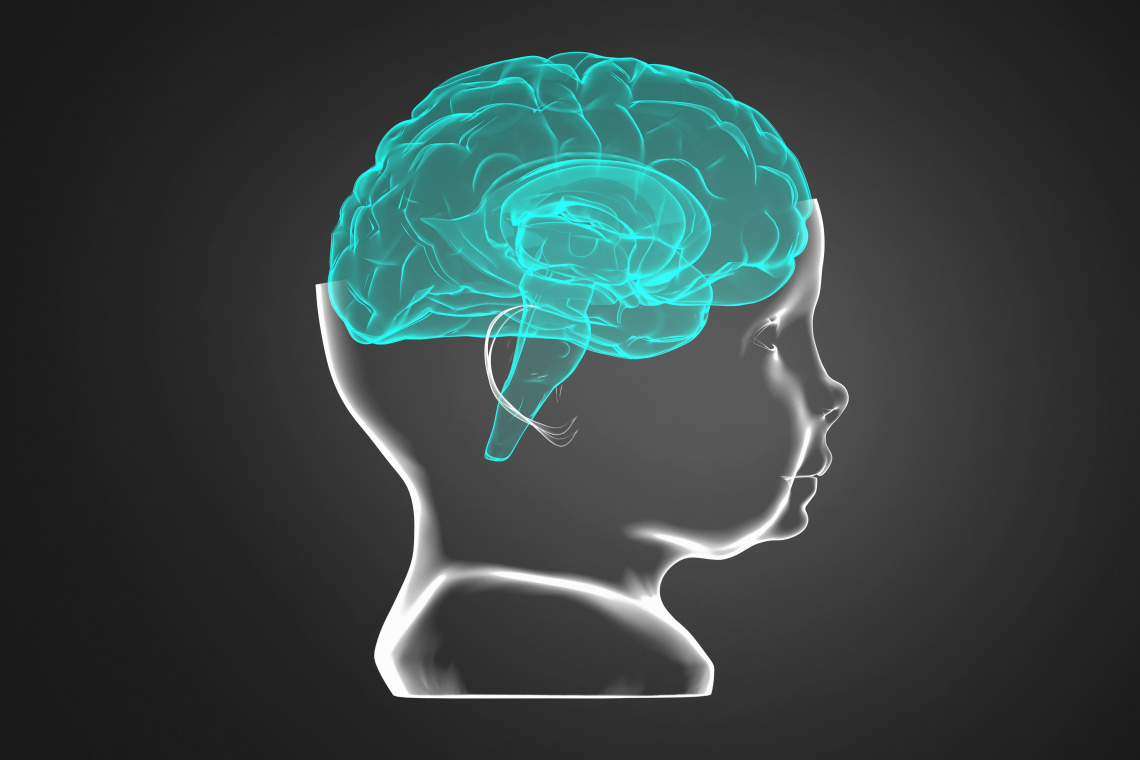Major european initiative on a rare genetic disease
Unknown until 2013, GNAO1 encephalopathy is a rare disease caused by mutations in the GNAO1 gene leading to severe motor and intellectual handicaps from birth. In 2022, Vladimir Katanaev, a professor in the Department of Cell Physiology and Metabolism, discovered that a simple zinc-based treatment could change the lives of these children. Today, the European Rare Diseases Programme is bringing together eight clinical and research teams and patient associations in a new initiative to boost fundamental and clinical research into this little-known disease. Vladimir Katanaev will be in charge of the fundamental research component.
 © iStock
© iStock
Professor Katanaev, what are the characteristics of GNAO1 encephalopathy?
This is a neurodevelopmental disorder caused by mutations in the GNAO1 gene, first identified in 2013. The replacement of one amino acid by another in a protein sequence encoded by this gene disrupts a protein activation and deactivation mechanism and alters the ability of neurons to communicate correctly with their environment. The consequences for the construction of the brain are devastating: retarded intellectual and motor development, uncontrollable movements, or epilepsy sometimes accompanied by cerebral lesions and atrophy. In ten years, around 200 cases have been identified, but the extent of the disease and its progression are still not fully understood.
In 2022 you made an unexpected discovery...
I've been working on this gene for around twenty years. When the first patients were described in 2013, I naturally wanted to decipher the molecular causes of the disease, encouraged in particular by parents of affected children who had contacted me. Understanding the finer mechanisms of this mutation led me to test hundreds of molecules in order to assess their effect. And what a surprise: zinc, a product that has been known for decades, seems to have a positive effect on these children's symptoms.
This treatment began to be applied worldwide.
Following the discovery of the actual cause of the disease, patient associations were gradually set up, along with networks of scientists and doctors. This led to the emergence of synergies and the submission of major funding applications. We were able to obtain pan-European funding as part of the European Joint Programme on Rare Diseases, co-funded by the SNSF. Our project brings together eight teams from Italy, Switzerland, Spain, France, the UK, Turkey, Israel and the Netherlands, and also includes patient associations.
What is the main aim of this major European project?
Under the title "European Natural History Study and search for novel biomarkers in GNAO1 associated disorders", this project has two components. The clinical component aims to analyse the medical history of a cohort of 90 patients. Their clinical history will be assessed and monitored using a series of quantitative measures, including clinical measures (movement disorders, cognition, sleep, nutrition) and quality of life assessments. By collecting these longitudinal data, we hope to gain a better understanding of how the disease develops and identify the factors likely to influence outcomes.
And in terms of fundamental research?
The academic component, for which I am responsible with Dr Paola Bonsi, an Italian colleague, aims to explore the role of neuroinflammation and to identify new biomarkers to predict the severity of the disease, the evolution of the children's state of health and the effectiveness of medical treatments - both current and those that we are in the process of developing. Among these biomarkers, my laboratory will focus on analysing the microbiome of patients and the mouse model of the disease. In fact, GNAO1 is also expressed in the intestine and, in addition to neurological syndromes, all patients present various problems in the digestive system. We are therefore going to study the morphological and histological changes in the intestines of model mice and analyse their microbiome.
When do you expect to see the first concrete results?
Our initial results are already very encouraging. And the EJP Rare programme will enable us to build on this already promising momentum. For example, new research by Norwegian, French and Swiss clinical teams on a new mutation in the GNAO1 gene and the molecular mechanisms linking this mutation to the disease has recently been published. Other results, obtained with colleagues in Germany, describe not only a new mutation in GNAO1, but also clinical manifestations that have never before been associated with this disease - similar to the symptoms of Parkinson's disease. We are also working, with another team, on the details of zinc's action on the different mutations involved and on its clinical results. The European Union's support for our alliance of scientists, doctors and patient associations could make a real difference for these children and their families.
